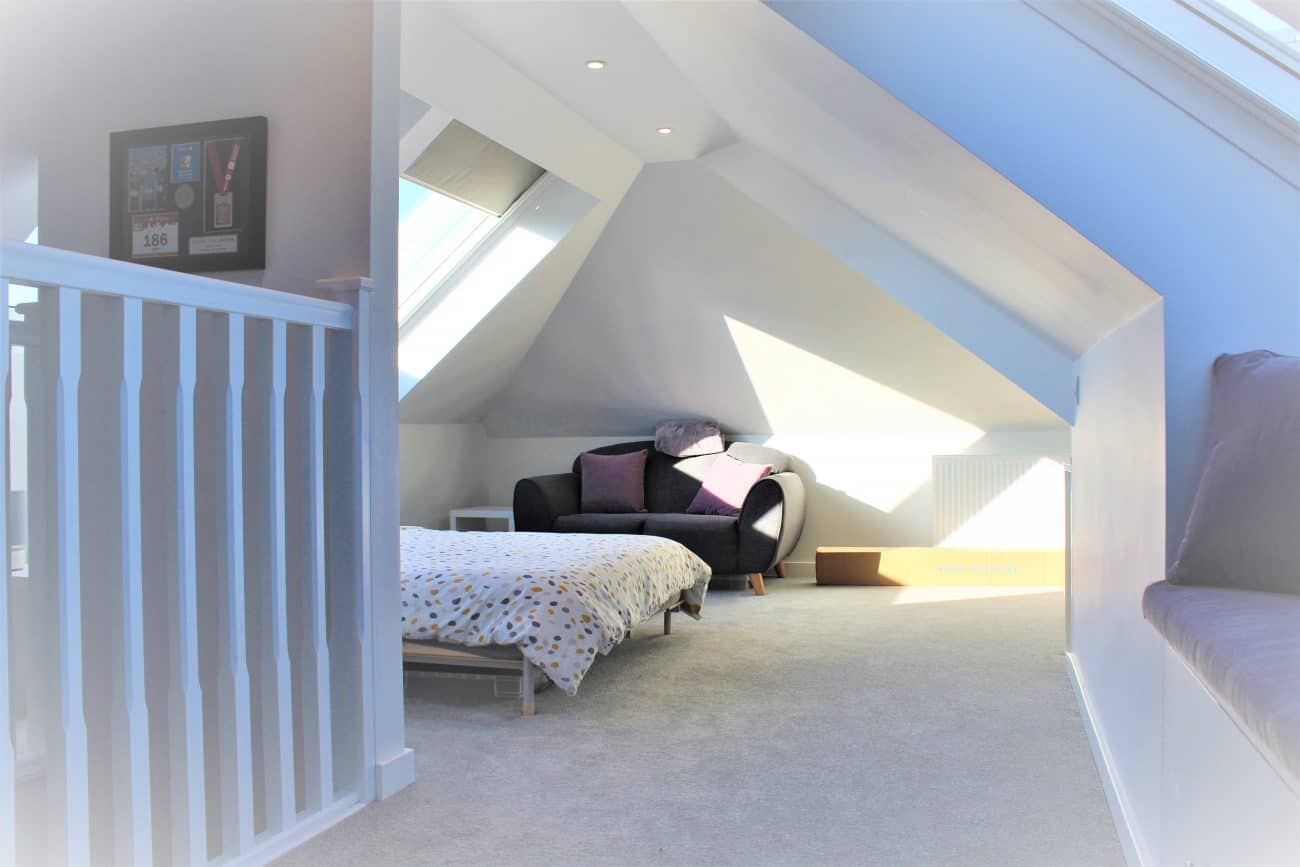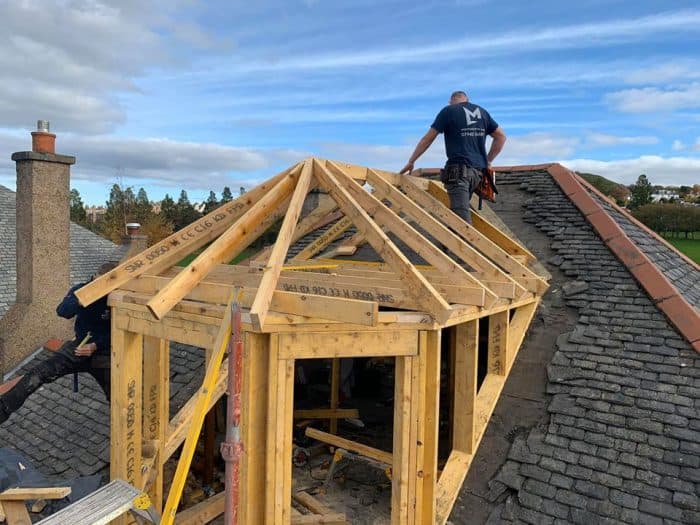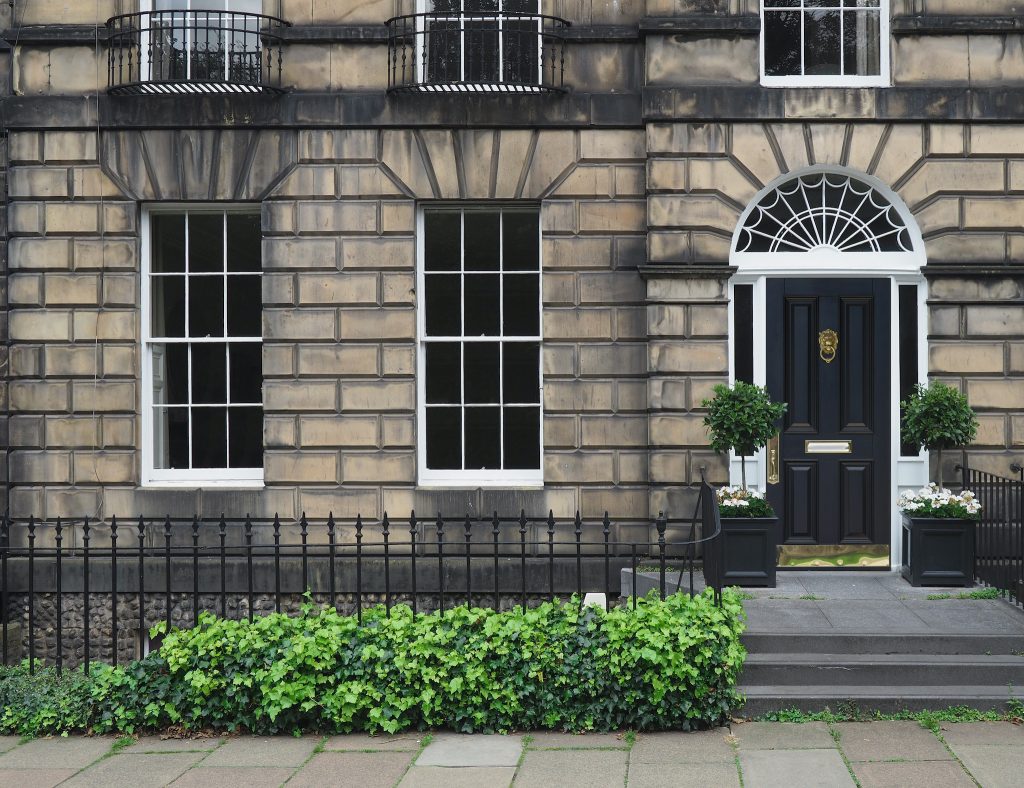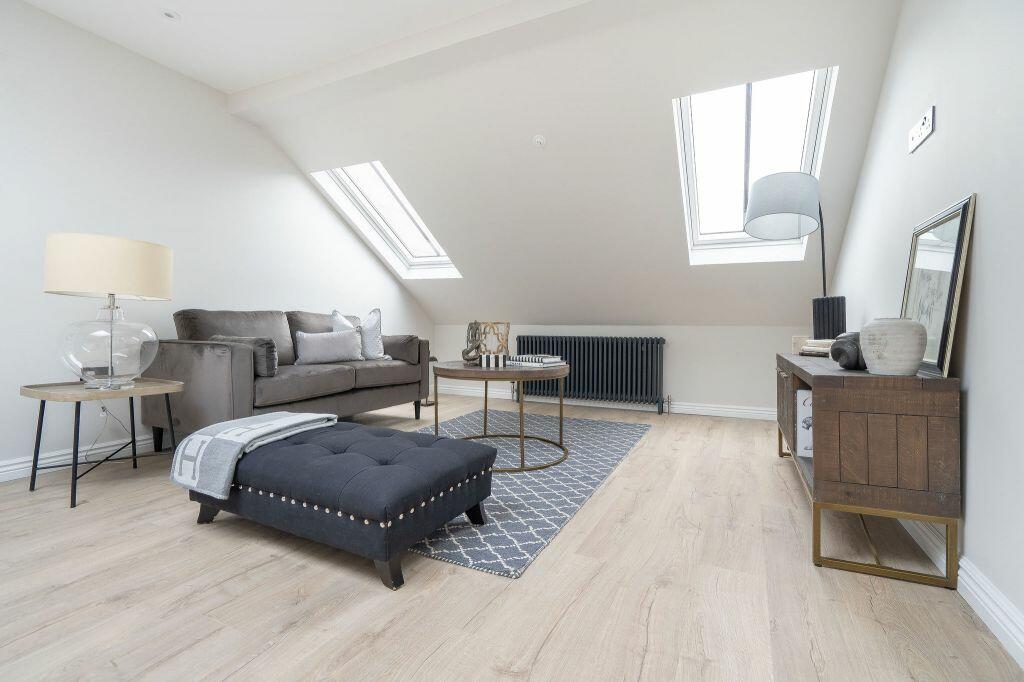Does a loft conversion in Edinburgh need planning permission?
If you are considering doing a Loft conversion to your Edinburgh property….here is the big question (well at least one of them), Does a Loft conversion in Edinburgh need planning permission?
When it comes to whether planning permission is required for a loft conversion, the interpretation of permitted development rights and local planning regulations can sometimes be subjective, and different planning authorities or professionals may have different viewpoints.
it’s important to gather accurate and reliable information regarding planning permission for a loft.
Read on for everything you need to know about permission for a Loft conversion.
Does a Loft Conversion require planning permission in Edinburgh?
- No, you generally do not require planning permission for a basic loft conversion that does not involve any changes to the style or shape of the roof.
- It is possible that you may need planning permission in certain cases. If your property is located in a conservation area or is listed, you will require planning permission for the loft conversion. Similarly, if you plan to alter the style or shape of the roof, it is likely that you will need to obtain planning permission.
Please note that it is important to verify the specific requirements for your property by consulting with the appropriate authorities, such as the City of Edinburgh’s planning department or a professional architect. They will provide accurate guidance based on the current regulations and the unique characteristics of your property
- Basic Loft Conversion: If your loft conversion does not involve any changes to the style or shape of the roof, generally speaking, you do not need planning permission. This is considered permitted development.
- Conservation Areas and Listed Buildings: However, if your property is located in a conservation area or is a listed building, you may require planning permission for the loft conversion, regardless of whether you are making changes to the roof or not.
- Altering Roof Style/Shape: If you plan to change the style or shape of the roof as part of the loft conversion, it is likely that you will need to obtain planning permission, even if your property is not in a conservation area or a listed building.
So here’s the complete lowdown on Loft conversions and planning permission
The need to apply for planning for a new conversion can vary depending on the specific characteristics and design of the project. There is no one-size-fits-all answer. Some loft conversions need planning permission, while others may not. It ultimately depends on factors such as the size, scope, and impact of the proposed conversion and the local regulations and restrictions in place. It’s essential to carefully evaluate the specific circumstances of your loft conversion project and consult with the planning department to see whether planning permission is needed or not.
Loft conversions can indeed be carried out in both flats and houses. Whether you have a flat or a house, you can transform the unused loft space into habitable space, such as bedrooms, home offices, playrooms, or additional living spaces.
The conversion process will involve adapting the loft space to meet building standards and creating a comfortable and functional living area within the available space. It’s important to consult with professionals, such as architects or contractors, who specialize in loft conversions to ensure that the design and construction are in line with regulations and to maximize the potential of your loft space.

Houses – Planning permission
The requirements and regulations for loft conversions in relation to planning permission can vary depending on the type of house you have. Here’s an overview of how different house types may be treated in terms of planning permission for loft conversions:
- Detached houses & Bungalows: Detached houses & Bungalows generally have more flexibility when it comes to loft conversions. Permitted development rights for detached houses often allow for loft conversions without the need for planning permission, subject to certain conditions and limitations.
- Semi-detached and terraced houses: Loft conversions in semi-detached and terraced houses are often considered more complex due to shared walls and potential impacts on the overall appearance of the building. In some cases, planning permission may be required for loft conversions in these types of houses. This is especially true if the proposed conversion involves altering the roofline or adding dormer windows that may affect the external appearance of the property. However, some loft conversions in these house types can still be carried out under permitted development rights, provided specific conditions and limitations are met. Consulting with your local planning authority is crucial to determine the requirements for your specific situation.
- Flats and apartments: Loft conversions in flats and apartments typically have stricter regulations due to the multiple ownership and potential impact on the overall structure of the building. In most cases, converting loft space into flats or apartments will require planning permission. It is important to consult with your local planning authority and also consider any leasehold agreements or building regulations that may apply.
In addition to planning permission, it’s important to consider building standards, which are separate from the planning process. Building regulations set standards for the structural integrity, fire safety, insulation, and other essential aspects of the construction work. Loft conversions, regardless of house type, usually need to comply with building regulations.
Flats – Planning permission
When it comes to flats, it is advisable to conduct a deed review with the assistance of a competent solicitor.
This review aims to examine the ownership status of the roof space. Since flats often involve shared ownership and communal areas, including the roof space, it is crucial to clarify the ownership rights and obtain legal confirmation before proceeding with a loft conversion. A solicitor experienced in property law can help navigate the complexities and ensure that all necessary permissions and consents are obtained from the relevant parties involved.
The Tenements (Scotland) Act 2004 does not specifically address ownership of the roof space in tenement buildings. Instead, it primarily focuses on the maintenance, repair, and management of common parts and shared responsibilities among tenement owners.
Regarding the ownership of the roof space in a tenement building, it generally depends on the individual circumstances, such as the provisions outlined in the title deeds, the tenement’s structure, and any agreements among the owners. In some cases, the roof space may be considered common property or common land, belonging jointly to all the owners in the tenement building. In other cases, it may be defined as part of the exclusive ownership of specific flats or individuals.
To determine the ownership of the roof space in a tenement building, it is advisable to review the title deeds, property documentation, and seek legal advice from a competent solicitor who specializes in property law. They can help clarify the specific ownership rights and obligations associated with the roof space in your particular tenement building.
New Dwellings
If you are thinking about converting a roof space to create a new separate dwelling or a new build home, such as transforming the attic space of a top-floor tenement flat into its own individual flat, it’s important to be aware that this type of project requires planning approval. Unlike some other loft conversions, there are no permitted development rights available for this particular scenario. (you will also need a building warrant).
To proceed with such a project, you will need to submit a planning application to the local council. It’s worth noting that the planning fee for this type of conversion is higher, typically amounting to £600.00. The increased fee reflects the additional considerations and assessments involved in creating a new dwelling.
Converting a roof space into a separate dwelling can offer various benefits, such as creating additional living space or generating rental income. However, due to the complexity and potential impact on the overall property, it’s crucial to follow the proper planning process to ensure the project is compliant with regulations and receives the necessary approvals.
By obtaining planning approval, you ensure that the conversion is carried out legally and in accordance with local building guidelines. This not only protects your investment but also provides peace of mind for future occupants or potential buyers. Furthermore, going through the official planning process demonstrates your commitment to responsible development and contributes to the overall integrity of the neighborhood.
If you’re considering converting a roof space into a separate dwelling, it’s advisable to consult with an experienced architect or planning consultant who can guide you through the process. They will help you navigate the planning requirements, prepare the necessary documentation, and ensure that your proposal aligns with local regulations and design standards.
Remember, by adhering to the correct planning process and obtaining the required approvals, you can confidently proceed with your roof space conversion, knowing that it has been legally sanctioned and is in line with your vision for your property.
Rooflight and dormer loft conversions
Rooflight and dormer loft conversions are indeed two of the most common types of loft conversions. Here’s a brief description of each:
- Rooflight Loft Conversion: A rooflight loft conversion, also known as a Velux conversion, is a popular and relatively straightforward option. It involves installing roof windows, such as Velux windows, into the existing roof slope. This type of conversion doesn’t alter the roofline significantly and doesn’t usually require planning permission, as it can often be done under permitted development rights. Rooflight conversions are suitable for properties with sufficient roof height and space to create a usable room or living area within the loft.
- Dormer Loft Conversion: A dormer loft conversion is a more extensive modification that typically involves creating additional floor space by building an extension that projects vertically from the slope of the existing roof. Dormers typically have a flat or sloping roof and include windows, which provide more headroom and natural light. Dormer conversions can be designed in various styles, such as flat roof dormers, hipped roof dormers, or gable-fronted dormers. Depending on the size, design, and location of the dormer, planning permission may be required. However, some smaller dormer conversions can be done under permitted development rights. It’s important to check with your local planning authority to determine the specific requirements for your property.
Both rooflight and dormer loft conversions can create valuable living space within the loft area, allowing for additional bedrooms, bathrooms, offices, or recreational areas, depending on your needs. The choice between the two will depend on factors such as your property’s layout, available roof space, planning restrictions, and aesthetic preferences.
Planning Permission for Velux Rooflight Loft Conversions Edinburgh
(When you are installing roof windows and are not altering the shape of the roof)

Example of a Loft conversion not requiring Planning consent
Generally, Rooflight loft conversions in Edinburgh do not require planning approval, however, there are a few caveats to this.
The City of Edinburgh has produced a guide to help steer you through the process.
You can find this below.
https://www.edinburgh.gov.uk/downloads/file/27026/for-householders
For a Velux Rooflight loft conversion, there are certain circumstances where it may not qualify as permitted development and you would need to apply for planning permission. These circumstances include:
- Conservation Area: If the property is in a conservation area, permitted development rights may not apply. In such cases, you would need to apply for planning permission for the loft conversion.
- Listed Building: If the building is a listed property, both planning permission and listed building consent would be required for any alterations, including a Velux Rooflight loft conversion. It is important to notify Historic Scotland, and your architect can assist in completing the necessary application.
It is crucial not to make assumptions about whether planning permission is required for your specific case. It is recommended to submit a planning application to the local authority and let them make the final decision. This approach ensures clarity and compliance with the regulations.
This means that there is no guesswork involved.
If your proposed loft conversion is permitted development and planning permission is not required, then your planning fee will be refunded. You will receive a letter saying that in the Council’s opinion, your development does not require planning permission.
Nothing to lose and everything to gain
The cost for a Householder Planning application is £300.00
The cost for a certificate of lawfulness application is £150.00
If you would like to discuss a possible loft conversion
Email me directly john@jwarch.co.uk
OR call me on 07885 357582
You can read all about dormer loft conversions v Velux conversions here
Planning permission for Dormer Loft Conversions Edinburgh
(this is when you are building a dormer extension on the roof)

Dormer Construction
You can read all about dormers here
This explains what a dormer is and the different types of Dormers available.
Generally, to construct a Dormer you’ll need to get planning approval.
The guidance states:
Dormers
Dormers on principal elevations, and all dormers in conservation areas or on a listed building, will require planning permission.
Dormers in conservation areas will be acceptable when they are compatible with the building and the character of the surrounding area.
All glazing proportions should match the main house or flat.
Dormers on a listed building will also require listed building consent.
New dormers on a listed building are not normally acceptable on front roof pitches.
New dormers on the rear roof pitches of listed buildings may be acceptable where compatible with the character of the listed building. Where acceptable on listed buildings, dormers should be of a historic design.
On unlisted houses that are not in conservation areas, rear and side dormers may be “permitted development”. Guidance on Householder Permitted Development Rights can be found in the Scottish Government Guidance (Circular 1/2012).
In our recent experience, the reality can be very different from the guidance notes as it is often challenging to have dormers approved in a conservation area. (for traditional tenements in particular)
Our advice remains the same: when it comes to planning permission, it’s best not to make assumptions. Taking the proactive step of submitting a planning application and allowing the council’s planning department to make a decision is the most prudent approach.
Why is it so important? Well, not following the correct process and assuming that your loft conversion is permitted development could potentially pose risks to your investment in your house. Without obtaining proper planning permission, you run the risk of facing enforcement actions, fines, or even being required to undo the changes made to your property.
By going through the proper channels and seeking planning permission, you ensure that your loft conversion project is in line with the local regulations and policies. It provides you with the peace of mind that your investment is protected and that your project has the necessary approvals.
Ultimately, following the correct process and obtaining planning permission safeguards your investment in your house. It provides legal certainty, avoids potential complications down the line, and ensures that your loft conversion is compliant with the relevant regulations. So, let’s not take unnecessary risks—submit that planning application and let the council’s planning department make the decision for you.
If you have any further questions or need assistance throughout the process, don’t hesitate to reach out to us. We’re here to help!
Conservation areas

When it comes to loft conversions in conservation areas, additional considerations and restrictions often apply. Conservation areas are designated by local planning authorities to protect and preserve the historic or architectural character of specific areas. These areas may have stricter regulations in place to maintain the overall appearance and significance of the surroundings.
If your property is located in a conservation area, it’s important to be aware of the following points regarding loft conversions:
- Planning permission: In many cases, loft conversions in conservation areas require planning permission, regardless of whether they would be considered permitted development in a non-conservation area. This means that you will need to submit a planning application to your local planning authority, specifying the details of your proposed loft conversion.
- Design and materials: Conservation areas often have specific guidelines and restrictions on the design, materials, and appearance of buildings within the area. Your loft conversion will need to comply with these guidelines to ensure it is in harmony with the character and architectural style of the conservation area.
- Consultation with the planning authority: Local planning authorities may have a more rigorous review process for loft conversions in conservation areas. They may consult with conservation officers or architectural experts to evaluate the impact of the proposed conversion on the character and appearance of the area.
- Community input: As with any construction project, it may be beneficial to engage with your neighbors and the local community to address any concerns and gather feedback. This can help ensure that your loft conversion respects the unique character and heritage of the conservation area.
Given the specific regulations and potential complexities involved, it is advisable to consult directly with your local planning authority or seek professional advice from an architect or planning consultant who has experience working with conservation areas. They can guide you through the process and help ensure compliance with the necessary requirements.
Listed Buildings

Loft conversions in listed buildings are subject to stringent regulations and often require specific permissions due to the historic and architectural significance of these properties. Listed buildings are structures that are recognized and protected for their special architectural, historic, or cultural value.
If you are considering a loft conversion in a listed building, here are some key points to keep in mind:
- Planning permission: In most cases, you will need to obtain planning permission from your local planning authority before proceeding with a loft conversion in a listed building. This permission is typically required regardless of whether the proposed conversion would be considered permitted development in a non-listed property.
- Historic Significance: The historic fabric and character of listed buildings must be carefully preserved. This means that any alterations, including loft conversions, should be sensitive to the building’s original features and overall heritage value. Your plans will need to demonstrate how the proposed conversion will protect and enhance the building’s historic significance.
- Conservation officer involvement: Local planning authorities often assign conservation officers to assess and guide any proposed alterations to listed buildings. These officers have expertise in heritage conservation and can provide advice on how to proceed with your loft conversion while preserving the building’s historic integrity. They may request detailed plans, specifications, and supporting documentation to evaluate the impact of the conversion on the listed building.
- Specialist architects and consultants: Given the complex nature of working with listed buildings, it is advisable to engage the services of architects, designers, and consultants with experience in heritage conservation. They can help navigate the planning process, develop appropriate designs, and liaise with the local planning authority and conservation officers.
- Building regulations: Attic conversions in listed buildings must also comply with building regulations, which ensure safety, structural integrity, and other essential aspects of the construction. These regulations apply to all types of buildings, including listed properties. Consultation with your local building control department is necessary to understand and meet the specific requirements.
It is crucial to consult with your local planning authority and involve professionals experienced in working with listed buildings. They will guide you through the necessary permissions, design considerations, and regulatory compliance to ensure a successful and sensitive loft conversion in a listed property.
Schedule a conversation with me
Permitted Development

Permitted development, in relation to converted lofts, refers to the rights and regulations that allow homeowners to carry out certain types of construction or alterations without the need for formal planning permission from the local planning authority. These rights are granted by the government and are subject to specific limitations and conditions.
When it comes to loft conversions, permitted development rights in the United Kingdom allow homeowners to convert their loft space into habitable rooms, such as bedrooms or home offices, without obtaining planning permission, provided that certain criteria are met. However, it’s important to note that permitted development rights may vary depending on your location and the specific conditions set by your local planning authority. It’s always advisable to check with your local authority to ensure you meet the requirements.
Some common criteria that typically apply to loft conversions under permitted development rights include:
- The additional space created by the conversion should not exceed a certain volume (often measured in cubic meters).
- The loft conversion should not extend beyond the existing roof slope facing the road.
- The materials used within the loft conversion should match the existing property’s appearance as closely as possible.
- No verandas, balconies or raised platforms should be added as part of the conversion.
- Side-facing windows should be obscure-glazed (i.e., frosted) and non-opening, while any windows on the roof slope should be flush with the roof.
It’s important to note that if your property is located in a conservation area, an Area of Outstanding Natural Beauty, a national park, or any other designated land, additional restrictions and limitations may apply. Therefore, it’s crucial to consult with your local planning authority or a professional architect/technician who can provide guidance specific to your circumstances.
It’s also worth mentioning that even if your loft conversion falls under permitted development rights, you will still need to comply with building regulations, which ensure that the construction work meets specific safety and structural standards. Building regulations cover various aspects such as fire safety, insulation, head height, ceiling height, staircase, joist depth, structural integrity, and ventilation. It is important to check with your local authority’s building control department to understand the specific regulations and requirements for your loft conversion project.
Certificate of Lawfulness

In addition to the regular planning permission process, there is an alternative option called a “Certificate of Lawfulness” that you can consider. This certificate provides several benefits that are worth mentioning.
Firstly, obtaining a Certificate of Lawfulness gives your loft conversion a legal status. It confirms that the changes you have made or plan to make are in compliance with the relevant planning regulations. This legal recognition provides peace of mind for you as the homeowner and for potential buyers in the future.
Having a Certificate of Lawfulness adds certainty to the status of your property. It eliminates any doubts about the legality of the loft conversion, making it easier to sell your house or flat if you decide to do so. Prospective buyers will appreciate the reassurance that the conversion has been deemed lawful.
Furthermore, the certificate can enhance the value of your property. It serves as official documentation that demonstrates the legitimacy of the loft conversion. This documentation can positively influence the perception of potential buyers, making your property more attractive on the market.
It’s important to note that the cost for a Certificate of Lawfulness application is £150.00, which is generally lower compared to the cost of a full planning application, which is £300.00.
Considering these benefits, a Certificate of Lawfulness can be a valuable investment for your loft conversion project. It provides legal recognition, certainty, and potential financial advantages. However, it’s always recommended to consult with professionals such as architects or planning consultants who can guide you through the application process and ensure that you are making the best decision for your specific circumstances.
Schedule a conversation with me
Require planning permission for your attic?
To apply for planning permission to convert a loft, you will typically need to follow these steps:
- Initial Research: Before you convert your Loft begin by conducting some initial research to understand the local planning policies and regulations that apply to loft conversions in your area. Check with your local planning authority or visit their website to gather information about the specific requirements and guidelines.
- Consult an Architect/Technician or Planning Consultant: It’s advisable to consult with an architect or planning consultant who specializes in loft conversions. They can assess your property, discuss your ideas and requirements, and help you determine if planning permission is needed for your specific project.
- Prepare the Application: Your architect or planning consultant will assist you in preparing the planning application. This typically involves creating architectural drawings, plans, and supporting documents that outline the proposed loft conversion, including any changes to the external appearance, dimensions, and materials to be used.
- Submit the Application: Once the application is prepared, it needs to be submitted to the local planning authority. This can usually be done online via the planning authority’s website, or you may need to submit physical copies of the application documents. There is usually a fee associated with the application, which varies depending on your location and the scale of the project.
- Application Review: The planning authority will review your application, considering factors such as the impact on neighboring properties, compliance with local planning policies, and any objections received from neighbors or other stakeholders. The review process can take several weeks or months, depending on the complexity of the project and the workload of the planning authority.
- Decision: Once the review is complete, the planning authority will make a decision regarding your application. They can approve it, approve it with conditions, or reject it. If approved, you will receive a formal planning permission notice outlining any conditions you must comply with during the construction process.
It’s important to note that the process may vary slightly depending on your location and the specific requirements of your local planning authority. Therefore, it’s recommended to consult with professionals who have expertise in your area to ensure you follow the correct process and provide all the necessary information for a successful planning application.
Conclusion
In conclusion, it cannot be emphasized enough how crucial it is to ensure that you have the necessary permissions in place when considering a loft conversion in Edinburgh. The stakes are simply too high to leave it to chance.
According to the guidance, it is the responsibility of the homeowner to ensure that all alterations and extensions have the required consent. Planning permission is just one aspect, and you will also require a building warrant for the building work. Failing to seek or obtain the necessary planning permission for works that require it can lead to enforcement action. Additionally, suppose your works are permitted development and do not require planning permission. In that case, it is still your responsibility to have evidence to support this, which can be obtained through a Certificate of Lawfulness.
It is worth investing the time to find out the specific requirements for your loft conversion project. It’s also important to note that regardless of whether planning consent is required or not, a building warrant is necessary for all loft conversions. This ensures that the construction meets building regulations and safety standards.
At John Webster Architecture, we have extensive experience working on numerous loft conversion projects of various sizes and complexities. We would be delighted to discuss your loft conversion project with you and provide the necessary guidance and expertise. Please feel free to reach out to us for further assistance.
All loft conversions require a building warrant regardless of the type or planning status.
However, this is a very different subject and you can read all about this here
It’s a comprehensive blog post on loft conversions, it covers everything you need to know about loft conversions.
At John Webster Architecture we have worked on dozens of loft conversion projects of all shapes and sizes and we would be delighted to speak with you about your loft conversion project.
If you would like to discuss a possible loft conversion
Email me directly john@jwarch.co.uk
OR call me on 07885 357582
Schedule a conversation with me

